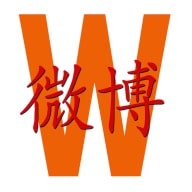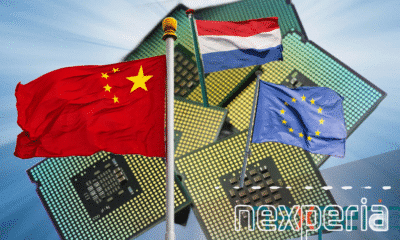China Food & Drinks
“Calling a Rat a Duck”: Jiangxi Students Discover Rat Head in Meal, School Insists It’s Duck (Updated)
Following the finding of a rat head in a cafeteria meal, this school maintains that it was actually a duck head, urging students not to discuss “rat head gate.”
Published
2 years agoon
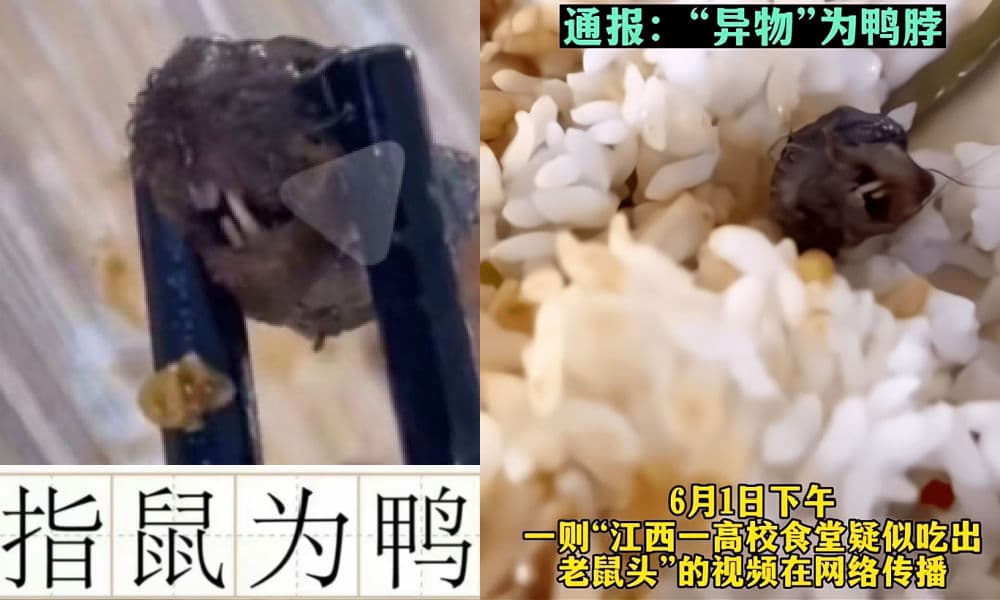
Updated June 18, 2023
A topic about a student finding a rodent head inside his school canteen meal received a staggering 310 million views on Weibo this Wednesday (#高校鼠头事件涉事窗口几乎没人去吃饭#).
The incident occurred some days ago in Nanchang at a school canteen of the Jiangxi Vocational Technical College of Industry Trade. A video showing what looks like a mouse or rat head in someone’s rice meal has been circulating on Chinese social media since.
This trending topic received over 310 million views on Weibo today and it's quite Kafkaesque. June 1st, a student at a Jiangxi college finds a rat head in his cafeteria rice meal. When he makes a complaint, he's told that it's actually duck. He says, "but you can see its teeth!" pic.twitter.com/MCnW7V2JSG
— Manya Koetse (@manyapan) June 7, 2023
When the person who found the rodent head in his meal complained to the catering staff, they insisted that it was not a rat head, but rather a duck head or neck. In the video, the person can be heard arguing, “This is a rat! It clearly has rat teeth, can’t you see?”
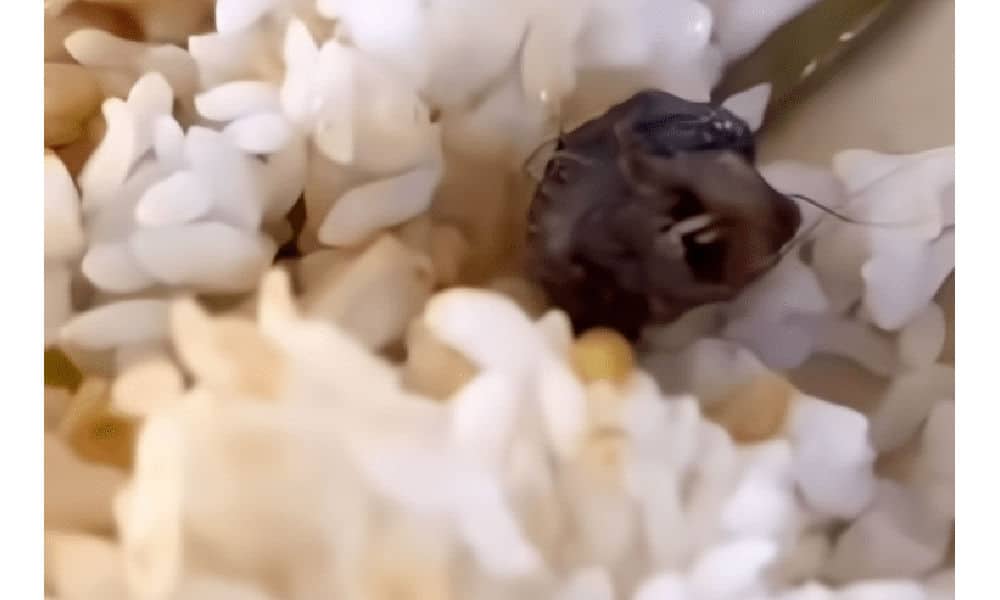
Duck head or duck neck are popular dishes in many parts of China. But it was not what the person ordered, and the unexpected bite also did not look like duck.
On June 3rd, the Jiangxi college debunked the “rat incident” rumors and stated that it was, in fact, a duck head. The following day, the local food supervision bureau also alleged that it was not a rat, but duck meat.
According to Henan Business Newspaper (河南商报), students at the school were reminded by staff not to discuss the incident on the internet (#学生透露高校禁止发布鼠头事件相关言论#).
Meanwhile, the official catering company contracted by the Jiangxi Vocational Technical College of Industry Trade issued a statement clarifying that they were not involved in the “rat head incident.” The incident occurred at a separate Chinese fast-food stall within the Qingshanhu campus (青山湖校区) canteen, which is not operated by Jinghe Food & Beverage (菁禾餐饮), which is the contracted company.
In what appears to be an effort to further stifle the inconvenient issue, they issued a warning, stating that individuals spreading rumors about their company would face consequences (#菁禾餐饮再次声明非鼠头事件承包方#).
According to students at the college, the involved stall has been running its business as usual since the incident happened. But the cafetaria has been more quiet as students are avoiding eating there. Many people choose to order takeout instead and have it delivered directly to their dormitory building.
Some netizens are diving deeper into this incident to prove that the meal actually did contain a rodent head and not duck. A Weibo blogger named Jianghu Lifuxiang (@江湖李傅相) posted a photo comparing the ‘foreign object’ in the meal to a rodent head.
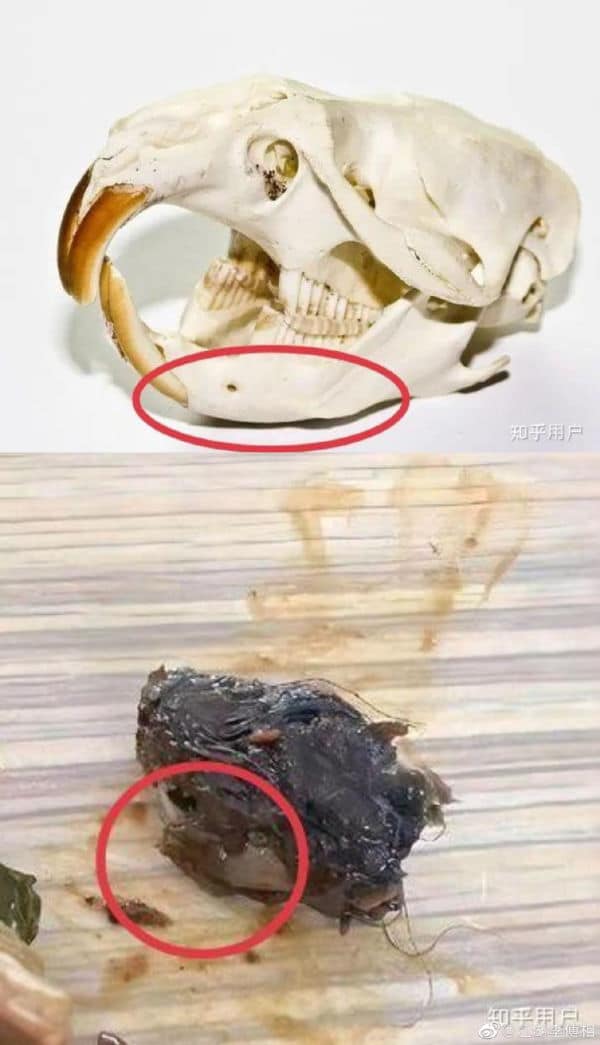
Rodents will be rodents, not ducks. Image posted on Weibo.
The blogger writes:
“The ‘is it a rat head or a duck neck’ incident (“鼠头or鸭脖”事件) has been fermenting online for several days now. But the most significant issue at hand is no longer about it being a rat or a duck, but about the school and the related departement treating the students and the public as fools.
Discovering a rat head while eating is not [even] the scariest part. What is truly frightening is that the public clearly sees a “rat head,” yet they insist on claiming it to be a “duck neck.” If it’s really a rat head, it would be better to calmly admit it. At most, this would be a food safety incident and one or two temporary workers might get sacked and a fine could be imposed, and that would be it.
The current situation is that the school confirms the foreign object [“异物”] to be a duck neck and makes the students to also confirm it’s a duck. Even the local food supervision leaders have come forward to testify that it is a duck neck.
The way that the school and the food supervision bureau have handled this matter is in complete opposition to the public and it is a provocation of social morality, completely inverting right and wrong and disregarding public trust in order to protect the “innocence” of one or two individuals. I wonder if these leaders are actually so stupid or if netizens are too naive.”
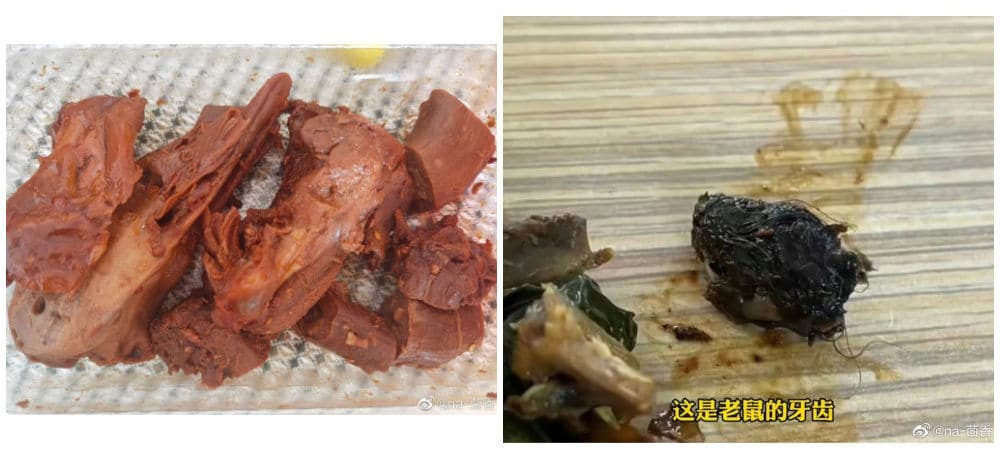
One Weibo user posts an image of duck neck and duck head besides the image of the mouse head.
There is a famous Chinese idiom, zhǐ lù wéi mǎ 指鹿为马, that translates to “calling a deer a horse” (or calling a stag a horse) in English, meaning to misrepresent something. The phrase comes from a story about the corrupt eunuch and minister Zhao Gao (赵高) during the Qin Dynasty who brought a deer to the second emperor, presenting it as a “horse.” Fearful to disagree with him, many people followed him and also identified the animal as a horse. In light of this phrase, some are now changing the idiom to “calling a rat a duck” (zhǐ shǔ wéi yā 指鼠为鸭) instead.
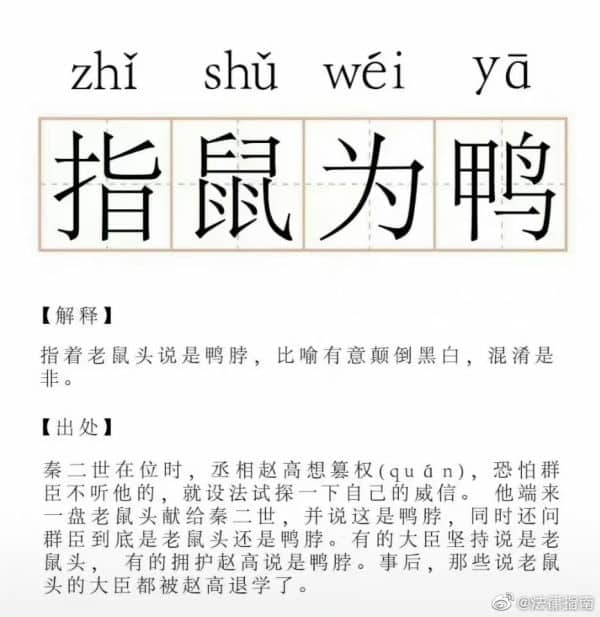
Calling a rat a duck, posted by @法律指南.
One Weibo commenter jokingly wrote:
“Students: “It’s a rat”
Leadership: “It’s duck neck”
Students: “It’s a rat”
Leadership: “Graduation certificate.”
Student: “It’s duck neck.”
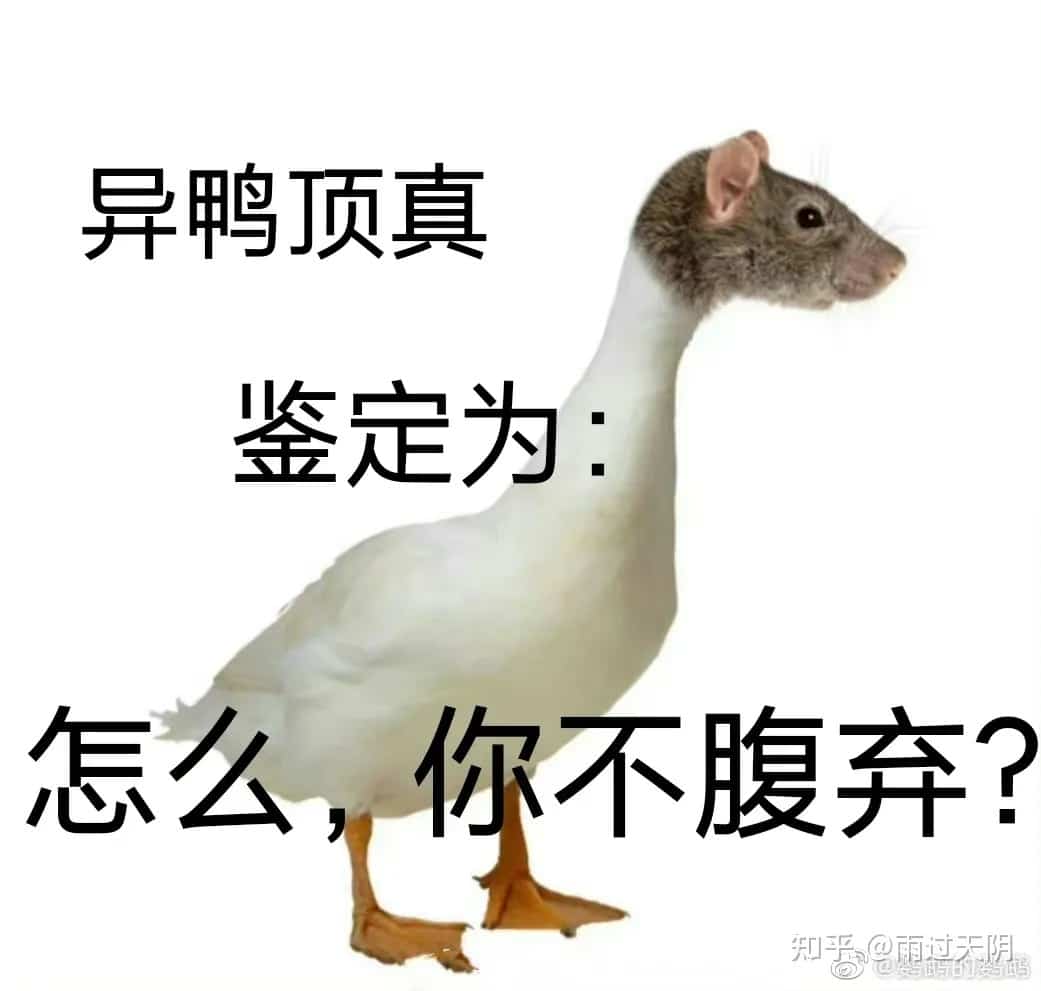
The duckrat, posted on Zhihu.
“Controlling public sentiment is difficult, and it requires some expertise,” some write, with others describing the entire affair as ‘simply bizzare.’
“You’re all so focused on the head,” another person wrote, “don’t you wanna know where the rest of it went?”
Update: On June 10, Jiangxi authorities announced that they have established an investigative task force to further look into the incident. Their findings will soon be released to the public (#江西就鸭脖事件成立联合调查组#).
Update 2: On June 17, an official report was released regarding the “June 1st Food Safety Incident.” After reviewing video footage, examining purchase records, and conducting related investigations, local authorities have determined that the “foreign object” found in the cafeteria meal more than two weeks ago was, in fact, a rodent’s head and not a duck neck.
Jiangxi Vocational Technical College is being held accountable for the incident, although the specific legal consequences have not been specified at this time.
The conclusion of the incident has not put an end to the online discussions; if anything, it has amplified them. There are now further inquiries as to why it took an entire research team to confirm what was already known to the public. People are also questioning why the school insisted that the mouse head was a duck’s neck and whether corruption played a role.
Most importantly, individuals want to know what happened to the rest of the rodent and whether everyone who ate at the cafeteria stall on June 1st unknowingly consumed rat meat.
By now, the entire incident has transcended the rat versus duck debate. It has become a symbol of bureaucratic inefficiency, power play, public deception, and the wastage of resources on senseless investigations.

Illustration of a rat wearing a red armband (for surveillance/inspection), shared via Chinese social media after the official statement on the rat head.
“It took them half a month to handle such a trivial matter. They attempted to silence and confuse. If they could brush it off, everything is fine. If not, they can feign ignorance,” wrote one Weibo user.
By Manya Koetse , with contributions by Miranda Barnes
Get the story behind the hashtag. Subscribe to What’s on Weibo here to receive our newsletter and get access to our latest articles:
Spotted a mistake or want to add something? Please let us know in comments below or email us. First-time commenters, please be patient – we will have to manually approve your comment before it appears.
©2023 Whatsonweibo. All rights reserved. Do not reproduce our content without permission – you can contact us at info@whatsonweibo.com.
Manya is the founder and editor-in-chief of What's on Weibo, offering independent analysis of social trends, online media, and digital culture in China for over a decade. Subscribe to gain access to content, including the Weibo Watch newsletter, which provides deeper insights into the China trends that matter. More about Manya at manyakoetse.com or follow on X.
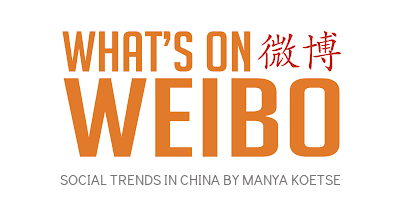
You may like
China Animals
China Faces Unprecedented Donkey Shortage Crisis
“We have plenty of cattle and horses in China now — just not enough donkeys” (“目前我国牛马都不缺,就缺驴”).
Published
2 weeks agoon
October 5, 2025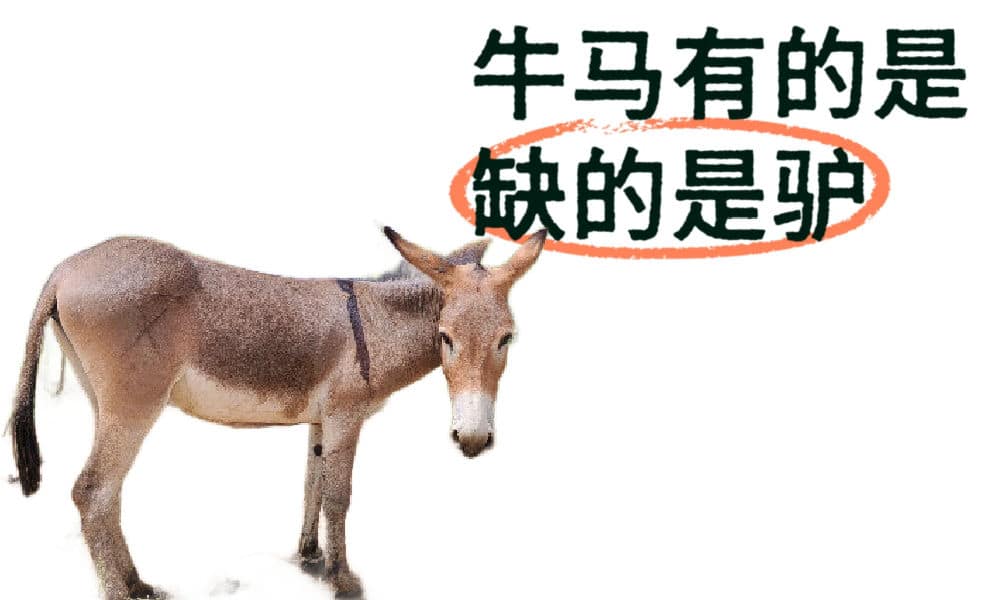
China is facing a serious donkey shortage. China’s donkey population is far below market demand, and the prices of donkey-related products continue to rise.
Recently, this issue went trending on Weibo under hashtags such as “China Currently Faces a Donkey Crisis” (#我国正面临缺驴危机#).
The Donkey Branch of China’s Livestock Association (中国畜牧业协会驴业分会) addressed this issue in Chinese media earlier last week, telling China News Weekly (中国新闻周刊): “We have plenty of cattle and horses in China now — just not enough donkeys” (“目前我国牛马都不缺,就缺驴”).
China’s donkey population has plummeted by nearly 90% over the past decades, from 11.2 million in 1990 to just 1.46 million in 2023.
The massive drop is related to the modernization of China’s agricultural industry, in which the traditional role of donkeys as farming helpers — “tractors” — has diminished. As agricultural machines took over, donkeys lost their role in Chinese villages and were “laid off.”
Donkeys also reproduce slowly, and breeding them is less profitable than pigs or sheep, partly due to their small body size.
Since 2008, Africa has surpassed Asia as the world’s largest donkey-producing region. Over the years, China has increasingly relied on imports to meet its demand for donkey products, with only about 20–30% of the donkey meat on the market coming from domestic sources.
China’s demand for donkeys mostly consists of meat and hides. As for the meat — donkey meat is both popular and culturally relevant in China, especially in northern provinces, where you’ll find many donkey meat dishes, from burgers to soups to donkey meat hotpot (驴肉火锅).
However, the main driver of donkey demand is the need for hides used to produce Ejiao (阿胶) — a traditional Chinese medicine made by stewing and concentrating donkey skin. Demand for Ejiao has surged in recent years, fueling a booming industry.
China’s dwindling donkey population has contributed to widespread overhunting and illegal killings across Africa. In response, the African Union imposed a 15-year ban on donkey skin exports in February 2023 to protect the continent’s remaining donkey population.
As a result of China’s ongoing “donkey crisis,” you’ll see increased prices for donkey hides and Ejiao products, and oh, those “donkey meat burgers” you order in China might actually be horse meat nowadays. Many vendors have switched — some secretly so (although that is officially illegal).
Efforts are underway to reverse the trend, including breeding incentives in Gansu and large-scale farms in Inner Mongolia and Xinjiang.
China is also cooperating with Pakistan, one of the world’s top donkey-producing nations, and will invest $37 million in donkey breeding.
However, experts say the shortage is unlikely to be resolved in the short term.
The quote that was featured by China News Weekly — “We have cows and horses, but no donkeys” (“牛马有的是,就缺驴”) — has sparked viral discussion online, not just because of the actual crisis but also due to some wordplay in Chinese, with “cows and horses” (“牛马”) often referring to hardworking, obedient workers, while “donkey” (“驴”) is used to describe more stubborn and less willing-to-comply individuals.

Not only is this quote making the shortage a metaphor for modern workplace dynamics in China, it also reflects on the state media editor who dared to feature this as the main header for the article. One Weibo user wrote: “It’s easy to be a cow or a horse. But being a donkey takes courage.”
By Manya Koetse
(follow on X, LinkedIn, or Instagram)
Spotted a mistake or want to add something? Please let us know in comments below or email us. First-time commenters, please be patient – we will have to manually approve your comment before it appears.
©2025 Whatsonweibo. All rights reserved. Do not reproduce our content without permission – you can contact us at info@whatsonweibo.com.
China Food & Drinks
China’s Prefab Storm Explained: Luo Yonghao vs. Xibei & the Great Yùzhìcài Debate
A big debate over yùzhìcài — pre-made food — has boiled over on Chinese social media after a Xibei food review by Luo Yonghao pushed the issue into the spotlight.
Published
4 weeks agoon
September 20, 2025It started with a negative restaurant review on social media, triggered a nationwide discussion about pre-made food in restaurants, and ended with far-reaching consequences. The Xibei controversy, explained.
A major discussion that first broke out on Chinese social media two years ago is being picked up again this month – and it’s completely blown up.
It is all about “yùzhìcài” (预制菜), ‘pre-fabricated meals’ or ‘pre-made food.’
From School Cafeterias to Restaurants
Back in 2023, there was widespread discussion over prefab meals when the new school season started and parents discovered that their children’s school cafeterias had transitioned from freshly prepared meals to ready-made ones.
Although the shift to “yùzhìcài” is part of a broader trend in China that has gained more attention over recent years, there has also been significant resistance to this change due to concerns over the meals lacking nutrition, containing too many additives, and not being safe enough. These issues become especially relevant when it’s about the meals being served to kids, and many people called for more legislation on the issue.
Now, in 2025, the resurfaced prefab food discussion is more focused on the restaurant industry than campus cafeteria.
This ‘prefab storm’ started when well-known entrepreneur and influencer Luo Yonghao (罗永浩) went out for dinner on September 10 with some friends at Xibei (西贝), a major Chinese restaurant chain specializing in northwestern Chinese cuisine.
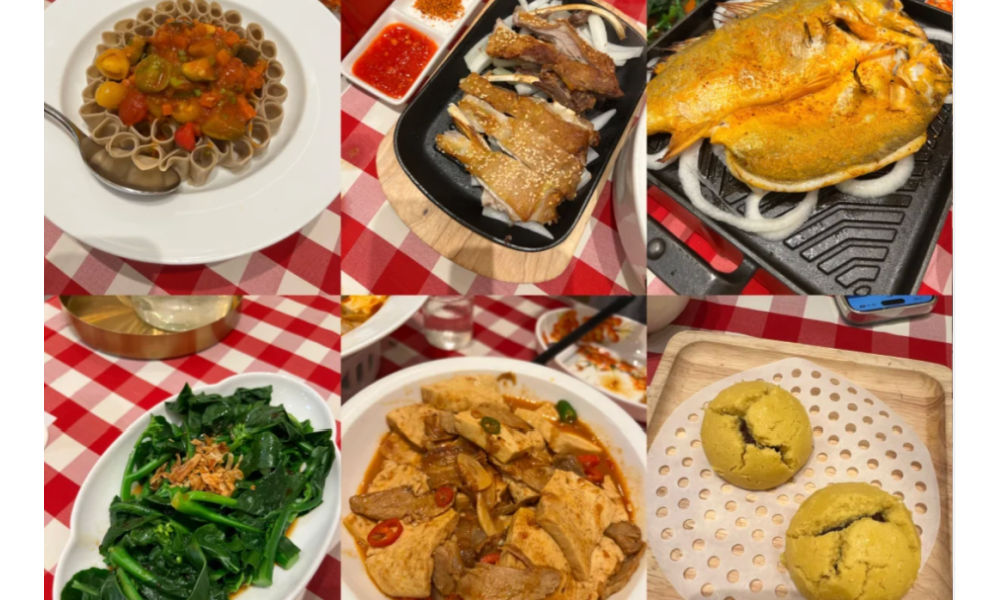
Example of Xibei dishes (not by Luo, but by a Xiaohongshu user).
On his Weibo account (@罗永浩的十字路口), he wrote about the disappointing experience:

His post immediately set off a nationwide storm of discussions.
What Is Yùzhìcài?
A large party of the online discussion was about what exactly counts as yùzhìcài.
After all, the entire process of making tofu, for example, from soybean to final product, is a form of pre-processing that’s been part of Chinese cuisine for centuries.
According to China’s State Administration for Market Regulation, the term “yùzhìcài” applies to food that’s been prepped in advance using large-scale methods such as marinating, stir-frying, steaming, and then packaged for transport and sale to consumers or use in restaurant service. They’re not ready to eat as-is and must be heated or cooked before serving.
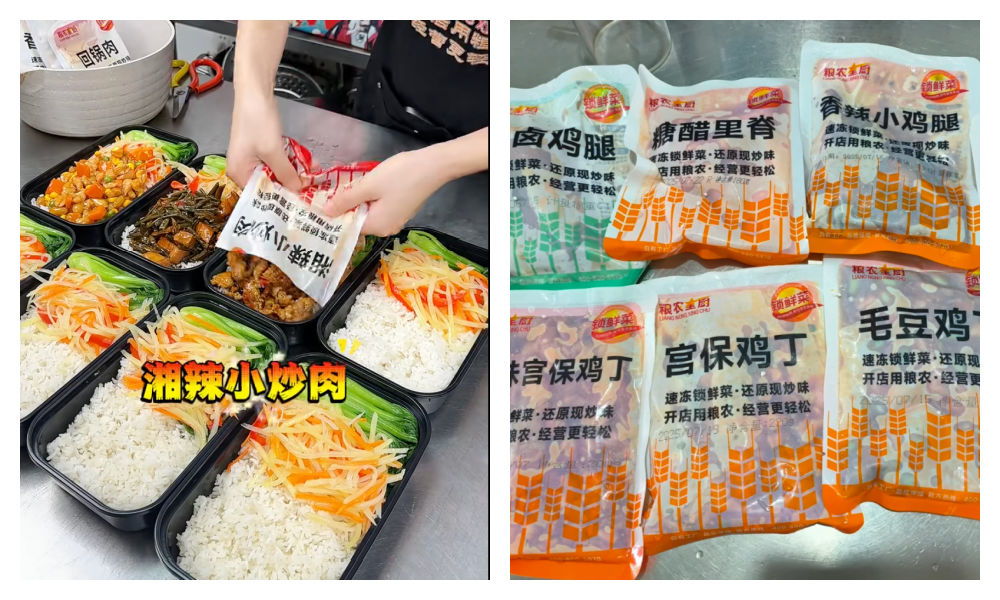
Examples of yuzhicai, pre-made food.
Still, many netizens wonder: does using a central kitchen qualify as yùzhìcài? Do frozen ingredients or factory-processed foods fall into the same category?
Many people aren’t necessarily opposed to pre-made dishes — some even associate them with better hygiene, especially when produced in regulated facilities, compared to meals prepared in smaller restaurant kitchens. At the same time, however, many object to pre-made food, assuming it is less healthy, or even unhealthy.
The “Pre-made War”
Luo’s criticism also wasn’t mainly about pre-made food in general, but about the high price and lack of disclosure about what’s being served.
Like one comment said: “I don’t mind pre-made food, but I do mind when the price doesn’t match.”
What made Luo’s comments particularly explosive was his choice of words — calling it “truly disgusting.”
When Chinese media contacted Xibei for comment, a spokesperson denied their food was pre-made and stressed that stir-fried dishes are cooked on-site, noodles are hand-kneaded, and beef marrow bones are freshly boiled each morning (#西贝回应被吐槽是预制菜#).
In response, Luo jokingly wrote: “…and their plastic bags are freshly cut, the microwave freshly opened, their prepared scripts freshly read…”
Xibei chairman Jia Guolong (贾国龙) clearly was not amused.
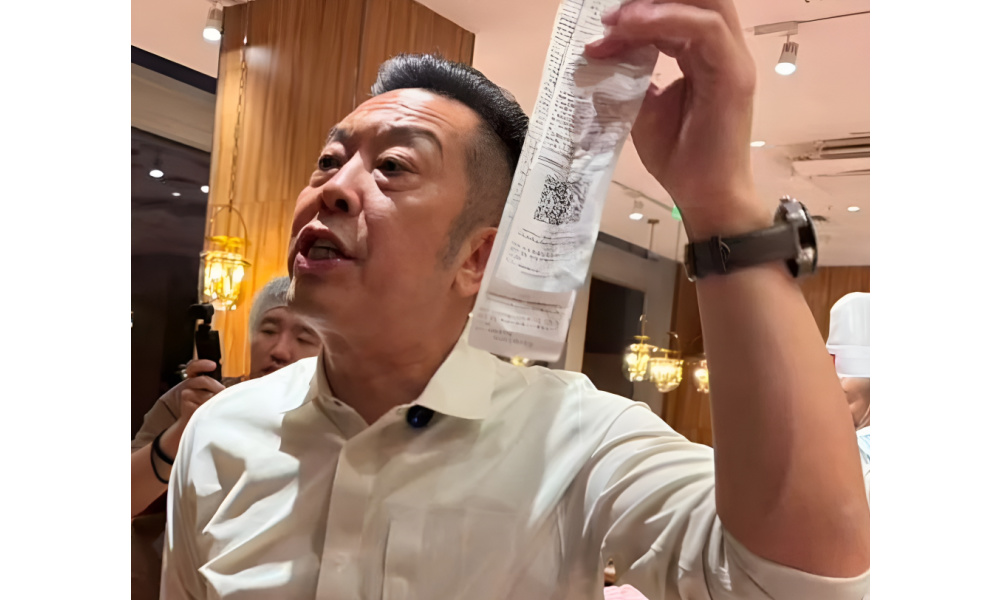
Xibei’s founder, Jia Guolong, was emotional about the controversy, which deeply affected the Xibei brand.
On September 11, he made a statement, saying:
Jia not only announced plans to sue Luo Yonghao, he even promised to launch a special “Luo Yonghao Menu” (罗永浩菜单) in Xibei restaurants.
Again, Luo responded:
But he didn’t leave it at that — the “pre-made war” was on. Luo even offered a RMB 100,000 ($14,000) reward for proof that Xibei uses pre-made food (an offer he later admitted was “impulsive”).
He also livestreamed, highlighting how Xibei’s children’s meals used frozen broccoli with a shelf life of up to two years, questioning whether such ingredients can be considered fresh, and criticizing the practice of selling “pre-made” vegetables at fresh food prices.

Luo’s livestream.
He further showed images of packaged sea bass used in Xibei kitchens, noting that the ingredients list included food additives sodium tripolyphosphate and sodium hexametaphosphate, and that the fish had a shelf life of up to 18 months.
Xibei Apologizes
Xibei, meanwhile, experienced what they called the largest external crisis since the founding of their company, with daily revenues dropping dramatically.
Trying to win back consumer trust, Xibei announced that all stores nationwide would open their kitchens to customer visits, actually launched their “Luo Yonghao Menu,” and made a promise: “If it doesn’t taste good, you don’t pay.”
But so far, Xibei hasn’t been able to fully win back the public’s favor. After all, it turns out that Xibei does use a central kitchen where food is prepared (meat is cut, vegetables washed), but because Chinese regulations do not count central kitchens making semi-finished or finished dishes for their own restaurants as yùzhìcài, many feel Jia Guolong is making use of a loophole.
Most people don’t care about the legal definition of yùzhìcài. What they care about is that the food is free of additives, fairly priced, tasty, and above all — fresh. Some argue that central kitchens and factories that make prefab food follow almost identical processes in essence.
In hopes of calming the PR crisis, Xibei also issued a public apology on September 15 in which they expressed regret for not meeting customer expectations and announced some changes to their company, including ensuring that more meals — including children’s meals — would be fully made in-store.
The Xibei Controversy: Consequences & Takeaways
The heated confrontation between Luo and Xibei has far-reaching consequences.
▪️ Legal Consequences
One of those consequences is a legal one. Although already underway, the public attention on prefab food might have quickened the process of regulation.
On September 13, the National Health Commission announced a draft law of the National Food Safety Standard for Pre-Made Dishes (预制菜食品安全国家标准). Once finalized, China will have a unified definition of “prefab food,” and for the first time, restaurants will be required to disclose whether and how they use it.
Luo Yonghao applauded the move, and while cheering for the upcoming regulations, he also said that the Xibei matter could be put to rest for now — after all, he suggested that legal clarity was one of his main goals.
▪️ Industry-Wide Impact
Seeing the dramatic impact this controversy has had on Xibei, other Chinese restaurant brands have begun to anticipate the yùzhìcài issue.

The Green Tea Restaurant quietly removed its signs saying all of its food is freshly made.
The Chinese dining chain Green Tea Restaurant (绿茶餐厅), for example, apparently wanted to avoid a PR crisis of its own and quietly removed its storefront sign that read: “No pre-made food, all dishes freshly made.” On their delivery packaging, they also blacked out the “no pre-made food” sentence, according to some media.

Livestreaming from the kitchen as a way to build consumer trust.
The controversy is also being used to the advantage of some restaurants, which have now begun live broadcasting their kitchens to show dishes being prepared in real time (后厨现炒, 后厨直播) — something that many Chinese restaurants, like Haidilao (海底捞), already did previously, and which is now being promoted as another way to build consumer trust.
▪️ A Win for Consumers
For consumers, the controversy has brought much more awareness about food preparation processes, with more people demanding transparency about the food they are served.
“Prefab Food Transparency” (预制菜透明化) has become a buzzword of the week, along with “Freshly Cooked, Freshly Stir-Fried” (现制现炒) as a way to win over diners.
Notably, there is one Chinese restaurant chain that is not being scrutinized this week.
Saizeriya (萨莉亚), a popular Japanese chain selling “Italian” food, is known as the “king of pre-made food.”
The reason Saizeriya has avoided public backlash despite being known for its yùzhìcài is because it is very affordable, and it has never pretended to be a “freshly made” restaurant — what you see is what you get.
That transparency, in the end, is what consumers are looking for — preferring consistency, honesty, and affordability over a more high-end restaurant like Xibei that presents itself as fresh while secretly using frozen ingredients.
In the end, that’s perhaps the lesson that can be learned from this whole ordeal for other restaurant chains: don’t pretend to be freshly made if you’re not, don’t be vague about your use of yùzhìcài, don’t mess with children’s food, and remember that in China’s dining culture and online environment, consumer trust is hard-won, and easily lost.
By Manya Koetse
Thanks to Miranda Barnes
(follow on X, LinkedIn, or Instagram)
Spotted a mistake or want to add something? Please let us know in comments below or email us. First-time commenters, please be patient – we will have to manually approve your comment before it appears.
©2025 Whatsonweibo. All rights reserved. Do not reproduce our content without permission – you can contact us at info@whatsonweibo.com.
Subscribe
What’s on Weibo is a reader-supported publication, run by Manya Koetse (@manyapan), offering independent analysis of social trends in China for over a decade. To receive new posts and support our work, consider becoming a paid subscriber.

Get in touch
Would you like to become a contributor, or do you have any tips or suggestions? Get in touch here!

From Tents to ‘Tangping Travel”: New Travel Trends among Young Chinese

House of Wahaha: Zong Fuli Resigns

How the “Nexperia Incident” Became a Mirror of China–Europe Tensions

China Faces Unprecedented Donkey Shortage Crisis

Nanchang Crowd Confuses Fan for Knife — Man Kicked Down and Taken Away

“Jiangyou Bullying Incident”: From Online Outrage to Offline Protest

The Rising Online Movement for Smoke-Free Public Spaces in China

China Trend Watch: Pagoda Fruit Backlash, Tiananmen Parade Drill & Alipay Outage (Aug 11–12)

From Schadenfreude to Sympathy: Chinese Online Reactions to Charlie Kirk Shooting

Passing the Torch from ‘Ne Zha’ to ‘Nobody’: China’s Box Office Poster Relay Tradition
Popular Reads
-

 China Memes & Viral3 months ago
China Memes & Viral3 months agoHidden Cameras and Taboo Topics: The Many Layers of the “Nanjing Sister Hong” Scandal
-

 China Books & Literature12 months ago
China Books & Literature12 months agoThe Price of Writing Smut: Inside China’s Crackdown on Erotic Fiction
-

 China Insight5 months ago
China Insight5 months agoUnderstanding the Dr. Xiao Medical Scandal
-

 China Memes & Viral10 months ago
China Memes & Viral10 months agoOur Picks: Top 10 Chinese Buzzwords and Phrases of 2024 Explained
